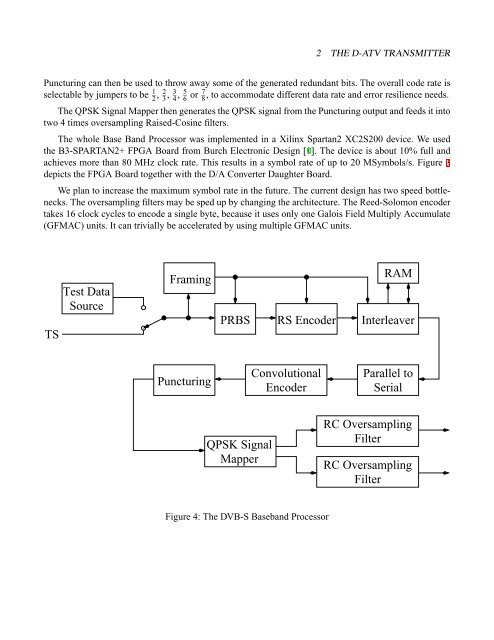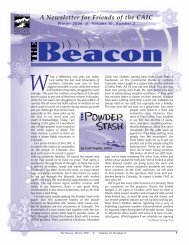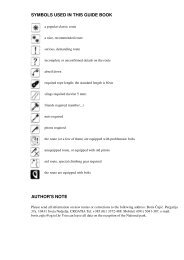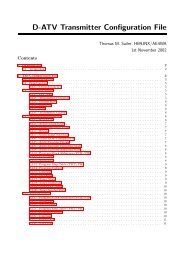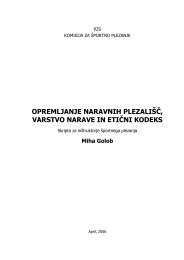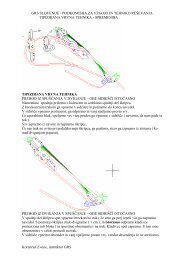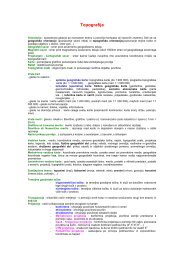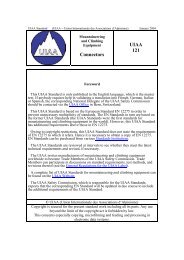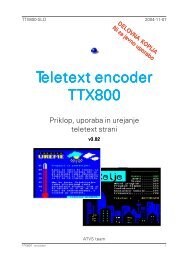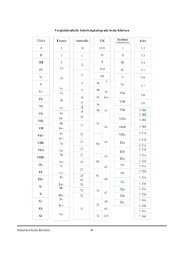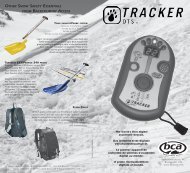Digital Amateur TeleVision (D-ATV) - Bavarian Packet Radio Group
Digital Amateur TeleVision (D-ATV) - Bavarian Packet Radio Group
Digital Amateur TeleVision (D-ATV) - Bavarian Packet Radio Group
Create successful ePaper yourself
Turn your PDF publications into a flip-book with our unique Google optimized e-Paper software.
2 THE D-<strong>ATV</strong> TRANSMITTERPuncturing can then be used to throw away some of the generated redundant bits. The overall code rate isselectable by jumpers to be 1 2 , 2 3 , 3 4 , 5 6 or 7 8, to accommodate different data rate and error resilience needs.The QPSK Signal Mapper then generates the QPSK signal from the Puncturing output and feeds it intotwo 4 times oversampling Raised-Cosine filters.The whole Base Band Processor was implemented in a Xilinx Spartan2 XC2S200 device. We usedthe B3-SPARTAN2+ FPGA Board from Burch Electronic Design [1]. The device is about 10% full andachieves more than 80 MHz clock rate. This results in a symbol rate of up to 20 MSymbols/s. Figure 3depicts the FPGA Board together with the D/A Converter Daughter Board.We plan to increase the maximum symbol rate in the future. The current design has two speed bottlenecks.The oversampling filters may be sped up by changing the architecture. The Reed-Solomon encodertakes 16 clock cycles to encode a single byte, because it uses only one Galois Field Multiply Accumulate(GFMAC) units. It can trivially be accelerated by using multiple GFMAC units.TSTest DataSourceFramingPRBSRS EncoderRAMInterleaverPuncturingConvolutionalEncoderParallel toSerialQPSK SignalMapperRC OversamplingFilterRC OversamplingFilterFigure 4: The DVB-S Baseband Processor


